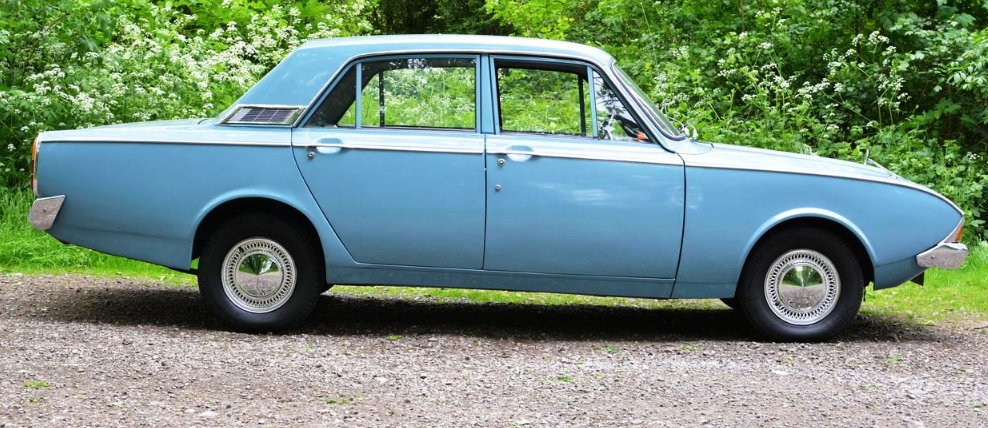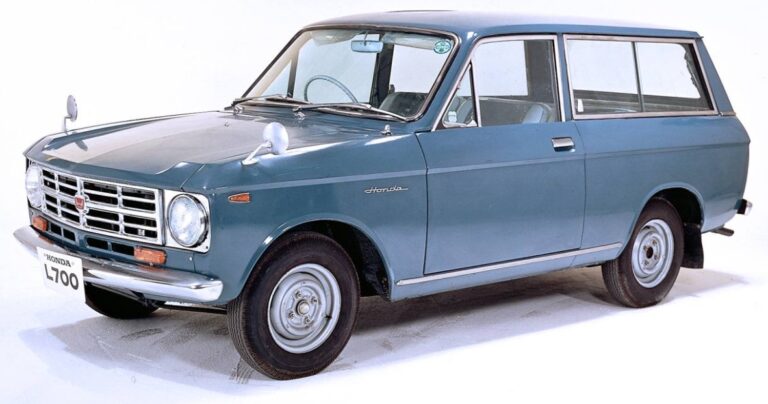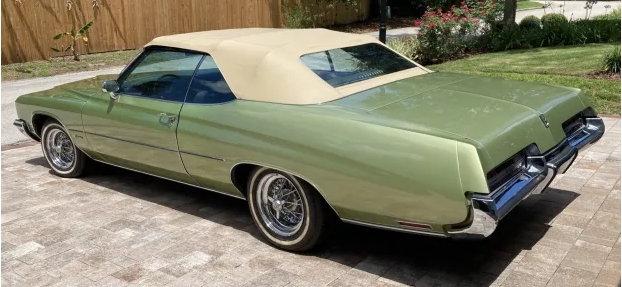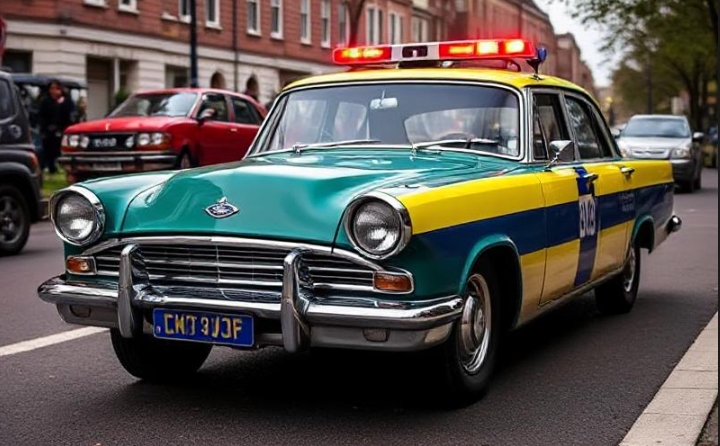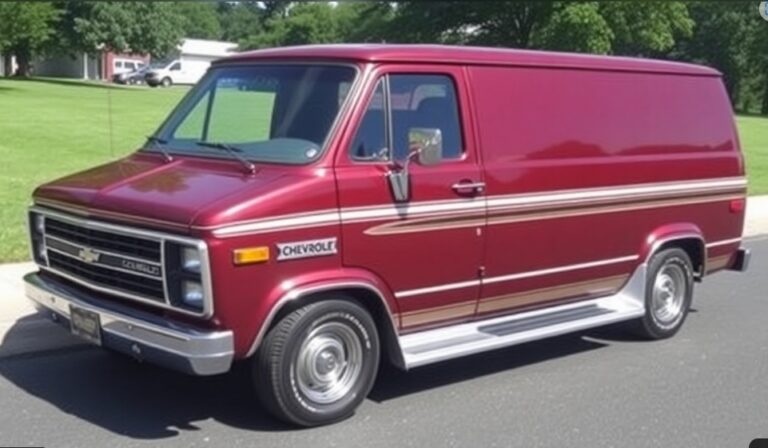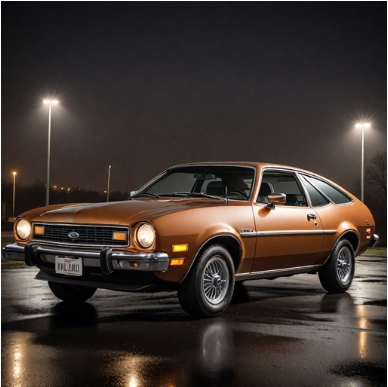Ford’s Daring Dart: The Complete History of the Ford Corsair
In the vibrant, fast-changing landscape of 1960s Britain, the automotive world was a battleground of innovation and style. Ford of Britain, having struck gold with the everyman appeal of the Anglia and the sensational sales success of the Cortina, identified a lucrative gap in its model range. There was a growing class of motorist who desired something more distinctive and upmarket than a Cortina, but for whom the large, stately Zephyr or Zodiac was a step too far in both size and price. Ford’s answer, launched in 1963, was a car defined by its audacious, American-influenced styling and a name that evoked images of pirates and adventurers: the Ford Corsair.
For a production run of just seven years, the Corsair left an indelible mark, evolving from a stylish but modest performer into a V4-powered executive express that would set the template for Ford’s aspirational models for decades to come.
Genesis and Launch: Project Buccaneer (1963-1965)
The Corsair, internally codenamed “Project Buccaneer,” was an exercise in clever platform engineering. To keep development costs down, it was based on the floorpan of the hugely successful Cortina Mk1, but stretched by three inches (76mm) to provide a longer wheelbase. This extra length was dedicated entirely to improving rear passenger legroom, immediately positioning the Corsair as a more spacious and comfortable machine.
The real masterstroke, however, was its external design. Penned by the team under Roy Brown Jr.—the same designer famously associated with the Ford Edsel—the Corsair eschewed the Cortina’s conservative lines for a dramatic, transatlantic aesthetic. Its defining feature was a sharp, pointed nose cone grille, clearly inspired by the third-generation Ford Thunderbird. This “jet-intake” design gave the car an aggressive, forward-thrusting appearance unlike anything else on British roads. Complemented by subtle tail fins and a clean, uncluttered profile, the Corsair was an instant head-turner.
The Ford Corsair was officially launched to the public in October 1963, initially available only as a two-door or four-door saloon. Under the bonnet, the mechanicals were familiar, using the reliable 1.5-litre (1498cc) Kent pre-crossflow four-cylinder engine, borrowed directly from the Cortina GT.
The model range at launch comprised three distinct trim levels:
- Corsair Standard: The entry-level model, initially only available as a two-door saloon. It was characteristically spartan, with minimal exterior chrome, simple vinyl-upholstered bench seats, and rubber floor matting. It was a Corsair in shape, but not in spirit, and sales were minimal.
- Corsair Deluxe: This was the volume seller and the true heart of the range, available in both two-door and four-door configurations. It offered a significant step up in comfort and appointment, featuring full carpeting, a more elaborate interior trim with individual front seats, a heater as standard, bright metal window surrounds, and more prominent exterior chrome detailing.
- Corsair GT: The performance-oriented model, the GT took the 1498cc Kent engine and added a twin-choke Weber carburetor, a four-branch exhaust manifold, and a higher-compression cylinder head. This raised power output from the standard 60 bhp to a much livelier 78 bhp. To handle the extra performance, the GT featured front disc brakes, lowered and stiffened suspension, and a remote gearshift for more precise changes. Visually, it was distinguished by a full-length chrome side stripe that kicked up over the rear wheel arch and a sporty interior that included a rev counter and a bank of supplementary gauges in a central console.
In 1964, the range was expanded with the introduction of an Estate model. Curiously, to save on tooling costs, the Corsair Estate used the rear body panels of the smaller Cortina Mk1 Estate, giving it a somewhat incongruous and less stylish appearance compared to the sleek saloon.
.
SEARCHING for those hard to find FORD manuals, guides & books?
This place has you covered! SEE All FORD Manuals From 1920 – 1989.
CHOOSE the year of your vehicle:

.
The V4 Revolution: A New Heart (1965-1967)
By 1965, the trusty Kent engine, while reliable, was reaching the limits of its development for a car of the Corsair’s size and market position. Ford needed a more modern, powerful engine to push the Corsair further upmarket and to differentiate it more clearly from the Cortina. The solution came in the form of the new, compact V4 “Essex” engine.
In October 1965, the Corsair range was comprehensively updated. The 1.5-litre Kent engine was dropped entirely, and all models now featured the V4 powerplant, easily identified by a subtle power bulge on the bonnet and “V4” badging on the front wings. This new engine, known for its impressive torque but also for a characteristic lack of refinement and inherent vibration, fundamentally changed the car’s character. Along with the engine came an improved all-synchromesh four-speed gearbox and a smoother diaphragm spring clutch.
The model lineup was restructured around the new engines:
- Corsair V4 Deluxe: This model replaced the previous Deluxe and was fitted with the 1.7-litre (1663cc) version of the Essex V4, producing 73 bhp. It delivered superior pulling power and more relaxed cruising than the old 1.5-litre Kent engine.
- Corsair V4 GT: The GT also received the 1.7-litre V4, but in a higher state of tune, offering around 88 bhp. However, many enthusiasts felt the free-revving nature of the old Kent engine was lost, replaced by the gruff torque of the V4.
- Corsair 2000: A new flagship model was introduced, featuring the 2.0-litre (1996cc) version of the Essex V4. This engine gave the Corsair genuinely impressive performance for its day, propelling it towards the new category of affordable executive saloons.
The Pinnacle of Luxury: The Corsair 2000E (1967-1970)
While the 2000 V4 was powerful, Ford saw an opportunity to create a truly luxurious halo model to compete with cars like the Rover 2000 and Triumph 2000. In 1967, they unveiled the car that would become the most iconic and desirable of the entire range: the Corsair 2000E. The ‘E’ stood for Executive, and Ford threw everything in its parts bin at the car to justify the name.
The 2000E was a masterpiece of packaging, taking the performance of the 2.0-litre V4 and wrapping it in unparalleled luxury for a mid-range saloon. The specification was lavish:
- Exterior: A standard-fit black vinyl roof, unique wheel trims (often mistaken for Rostyle wheels), prominent “2000E” badging, front fog lamps integrated into the grille, and reversing lights were all standard.
- Interior: This was where the 2000E truly shone. The cabin was a plush sanctuary of comfort. It featured high-quality cut-pile carpeting, unique cloth or vinyl upholstery, and most impressively, a full-width polished wood veneer dashboard, matching wood door cappings, and a wood-rimmed steering wheel. A comprehensive instrument panel included an ammeter and oil pressure gauge, housed within a deep binnacle. A centre console, map-reading light, and other luxury touches completed the package.
The Corsair 2000E wasn’t just a car; it was a statement. It showed that performance and luxury were no longer the exclusive preserve of expensive marques. It proved immensely popular and established the “E for Executive” trim level that Ford would successfully use on future generations of Cortinas, Capris, and Granadas.
Coachbuilt Conversions and Special Models
Beyond the factory models, the Corsair’s stylish base lent itself to specialist coachbuilders. The most famous of these were:
- Crayford Auto Developments: Known for their high-quality convertible conversions, Crayford turned both the 1500 GT and later the V4 models into elegant drop-tops. These cars featured extensive structural reinforcement to compensate for the loss of the roof and remain highly sought-after classics today.
- Abbott of Farnham: Abbott, a respected coachbuilder, produced their own estate car conversion before the official factory version was launched. These are exceedingly rare and distinct from the later Ford-built estates.
The End of an Era (1970)
By the close of the 1960s, the Corsair’s time was running out. Its sharp, “jet-age” styling had begun to look dated next to the emerging “Coke bottle” design trend. More importantly, it was being squeezed from both sides by Ford’s own new products.
The launch of the Ford Capri in 1969 stole the Corsair’s thunder as Ford’s stylish, sporty, mid-range offering. The Capri was “the car you always promised yourself” and instantly made the Corsair saloon feel old-fashioned. Furthermore, Ford was preparing the all-new, much larger Cortina Mk3 for a 1970 launch. This new Cortina was designed to be a “one-car” solution, replacing both the outgoing Cortina Mk2 and the Corsair, with its top-tier GXL models directly targeting the 2000E’s market.
Production of the Ford Corsair officially ceased in 1970, with the last models being sold into 1971. It was never directly replaced. Instead, its market segment was absorbed by the larger Cortina and the sportier Capri.
Legacy and an Australian Epilogue
The British Ford Corsair’s legacy is significant. It successfully bridged a crucial market gap for Ford during a period of immense growth. It pioneered the use of V4 engines in mainstream British saloons and, with the 2000E, created the blueprint for the affordable, well-equipped “executive” car that became a cornerstone of Ford’s marketing strategy for the next two decades.
The Corsair name, however, would be resurrected nearly twenty years later, far from home. From 1989 to 1992, Ford Australia sold a model named the Ford Corsair. This was a completely unrelated vehicle, a product of a government-led platform-sharing initiative. The Australian Corsair was, in fact, a rebadged Nissan Pintara (U12), available as a four-door sedan and a five-door liftback, and powered by Nissan 2.0-litre or 2.4-litre four-cylinder engines. This footnote in history serves as a final, distant echo of a name once synonymous with British jet-age style.
Today, the original Ford Corsair is a cherished classic, a symbol of a confident and optimistic era. From its audacious Thunderbird-inspired nose to the walnut-veneer luxury of the 2000E, it remains a fascinating and daring dart in the grand history of the Ford Motor Company.
